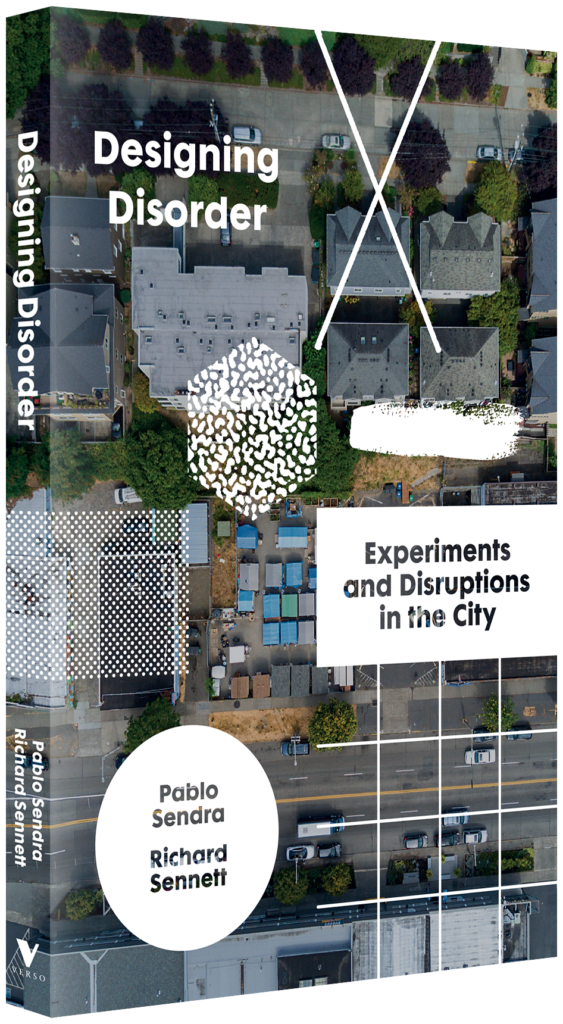Sennett, Richard, and Pablo Sendra. Designing disorder: Experiments and disruptions in the city. Verso Books, 2022.

In Designing Disorder: Experiments and Disruptions (2020) in the City, urban designer and architect Pablo Sendra and Professor of Sociology Richard Sennett team up to revisit and expand upon Sennett’s groundbreaking and still relevant 1970 work, The Uses of Disorder. Centred upon discussing options for creating less rigid, less definite, and more user-friendly cities, Sendra and Sennett ask if it is possible to design disorder, which they argue fosters community building, spontaneity, and vibrancy in cities.
What may initially appear to be an oxymoron, Designing Disorder is a necessary project for cities to take up if they wish to create, open, vibrant, usable, welcoming spaces for people. The book starts from the point of view that people’s spatial needs and desires are constantly changing, faster than any city can adapt to. If, however, city spaces are designed from the beginning to be flexible, adaptable, and containing the resources for people’s changing requirements, communities will be able to grow and change in infinite directions.
Richard Sennett begins the book by discussing how the neoliberal capitalist city is rigid by design to designate each area of the city in terms of a single economic function. Sennett discusses how rigidity and segregation make the city a cage and leave no room for spontaneity. In the remaining chapters, Pablo Sendra discusses case studies and ideas for designing disorder and flexibility into cities based on people’s relationships to infrastructure.
In discussing boundaries, Sennett acknowledges that we often privilege city centres when discussing vibrancy, community, and mixing of different people. Using an example of his own planning experience that he considers a failure, Sennett shows how community boundaries, if seen as areas of potential instead of dead space, can actually encourage mixing of different communities and promote integration instead of isolation. Sennett’s argument for planners to focus on the boundaries rather than just the centres as spaces for community is of particular importance in our age of both rising inequality and polarization.
Sendra notes that critiques of alienating modernist design are not meant to argue for a complete tear down of the existing, but to push for current landscapes to be made more flexible by adding to them. In the past, critiques of modernism from those who fight for less alienating design have been used to justify tearing down essential infrastructure such as public housing. I found this to be an important note as the neoliberal capitalist state often coopts the language of activists and progressive academics to make decisions that are not in the public interest more palatable.
I believe that this book would be a welcome addition to any social scientist, urban planner, or activist with an interest in how urban infrastructure and people coexist and form relationships. Further, I think that municipal politicians and planners with an aim to increase vibrancy and community as well as to decrease social inequalities in a post-COVID world should read this book to gain an understanding of how to promote spontaneity and how social problems can be caused by rigid infrastructure and addressed by “infrastructure for disorder” (p. 53).
- Reese Simoneau
